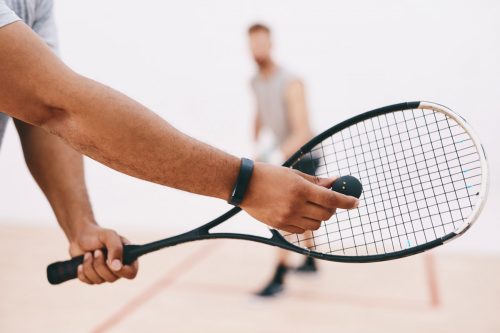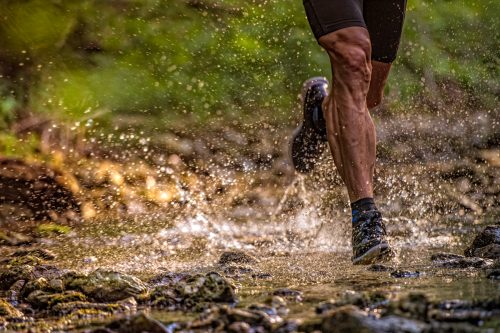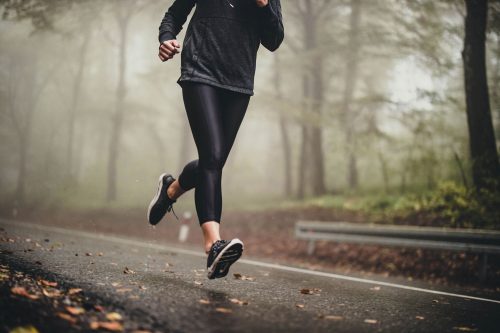Ski helmets have exploded in popularity over the past 20 years, and each year, more skiers and snowboarders opt to wear them. Are they necessary, though? Skiing has been around for hundreds of years, and only now are helmets becoming the norm. What's the cause of this trend? Can't we just wear bike helmets and avoid purchasing another piece of gear? We've researched the fundamental differences between bike and ski helmets to get the answer for you.
To put it simply, do not use a bike helmet while skiing. Ski helmets are not just a marketing ploy to get you to buy more gear. These helmets protect your head from impacts and environmental conditions specific to an alpine environment. Conversely, bike helmets protect your head under a very different set of circumstances. A bike helmet will not provide the same type or level of protection as you will get wearing a ski helmet.
In this post, we'll look at what makes these helmets so different and explore the reasons behind the differences. We'll also answer some other common helmet questions like how do you fit a ski helmet? How many skiers and snowboards wear helmets? Are helmets required? Keep reading to learn these answers to these questions. At the end, we'll talk about some of the best helmets for specific purposes and explain how to mount a GoPro camera to a ski helmet.

Ski Helmets Vs. Bike Helmets
Ski helmets and bike helmets are different in two key ways: impact protection and warmth. Let's take a closer look at these differences and the reasons for them.
Impact Protection
Helmet design is a reflection of safety and performance needs. Due to the different environments in which skiing and cycling take place, the types of accidents occurring are different. Subsequently, the type of protection required to reduce injury is also different.
Bike helmets and ski helmets both offer protection to the top of your head, but ski helmets also protect your head's back and sides. Additionally, skiers and snowboards reach higher speeds than cyclists typically do. As a result, bike helmets are not tested for their ability to withstand crashes at these speeds.
Additionally, a bike helmet must be replaced after an impact, whereas a ski helmet is much more durable, and you can usually continue using it after minor impacts. While on the topic of how these helmets withstand impacts, it's important to note that there are different standards for these products' materials. Plastic can become very brittle in cold temperatures. Ski helmet design considers this, but bike helmet design does not.
Warmth
The other key difference between ski and snowboard helmets is also a result of environmental needs. Ski helmets are for use in temperatures below freezing. A ski helmet's secondary job is to keep your head warm. On the other hand, bike helmets maximize airflow to keep your head cool.
How To Properly Fit And Size Your Ski Helmet?
Having a helmet that fits correctly is just as important as wearing one. Wearing a helmet that is too big or too small can make the helmet ineffective. Many helmets will have adjustable padding and fit systems. You can use these to get a more customized fit from your helmet.
Whether you are helmet shopping for yourself or a child, the process is the same. Follow these steps to get a great fitting helmet:
- Measure the circumference of your head just above your ears.
- Try on helmets based upon your head size.
- Shake your head while the helmet is on. If it moves around, it is too big.
- Ensure that your goggles fit correctly with your helmet.
Is It Safe To Wear A Hat Under A Helmet?
Many people wear hats under helmets. Doing this can add an extra layer of warmth and comfort, but it can reduce the helmet's effectiveness.
Simply put, your helmet is too big if you can fit a hat under it. Your helmet should fit your head snuggly and not wiggle or slide around. Your hat has not been tested for its effect on the impact protection offered by your helmet. Therefore, it is not a reliable or safe means to add padding to your helmet.
However, it is safe to wear a thin helmet liner. Helmet liners come in many styles and configurations, are not bulky, and fit your head closely.
Here is an example of a helmet liner on Amazon.
Do Ski Resorts Require Helmets?
The decision to wear or not wear a helmet is a personal one. After all, it's your head, and not wearing one only affects you. While most resorts rely on individuals to make the best choices and do not require helmets, some do.
Currently, only the state of New Jersey has a law requiring helmets for its two ski areas. Passed in 2017, the law in New Jersey is that all skiers and snowboarders under the age of 18 must wear helmets while on the slopes. No other state or ski area has created a similar rule or mandate for the general public. However, many ski areas now have helmet requirements for the members of their staff.
What Percentage Of Skiers Wear Helmets?
According to the National Ski Area Association's most recent report, 85% of all skiers and snowboarders wore helmets during the 2018-2019 ski season. Additionally, during that same season, 99% of children under the age of ten wore helmets.
The percentage of skiers and snowboarders wearing helmets has steadily risen for the last seventeen years. However, there is still one age group that is reluctant to wear helmets. Eighty percent of people between the ages of 18 and 24 do not wear a helmet.
What Does The ASTM Sticker Mean On My Ski Helmet?
ASTM stands for the American Society for Testing and Materials. The ASTM is an international organization that publishes best practices technical standards based on industry consensus for various materials, products, services, and systems.
The ASTM has developed standards for snow sports helmets. These standards give manufacturers a set of guidelines to follow when designing and manufacturing helmets to ensure that they fit the consumer's needs. Not all ski and snowboard helmets will meet ASTM standards, but those that do will have an ASTM sticker somewhere on the helmet.
What Is The Best Ski Helmet For Warmth?
The Quantum MIPS helmet by Smith is the best ski helmet on the market right now for warmth. Smith is one of the leading manufacturers of ski and snowboard headgear.
This helmet features a custom fit dial and a magnetic chin strap. There are quite a few vents on this helmet, but these vents place a crucial role in regulating temperature. Even on the coldest days, you can still work up a sweat. Venting technology allows moisture to escape and prevents your head from getting too sweaty, which is vital because a sweaty head becomes a cold head.
You can find this helmet on Amazon.
What Is The Best Ski Helmet For Backcountry?
You want a lightweight, highly versatile helmet for backcountry skiing that will work for both uphill climbs and downhill descents. Salomon's MTN Lab helmet checks all of these boxes.
This helmet is ultra-light and has an excellent ventilation system to keep your head cool while working hard. This helmet also meets safety standards for skiing and climbing, so no matter what kind of situation you get into, your head will be protected.
This helmet is available on Amazon.
How To Mount A GoPro To A Ski Helmet?
To mount a GoPro camera to a ski helmet, follow these steps:
- Clean your helmet so that the mount can fully adhere to the surface of the helmet.
- Peeling the backing off of the curved adhesive mount, and stick it to your helmet.
- Attach your camera to the mount using the included hardware.
Conclusion
Ski helmets and bike helmets are designed for different purposes and are not interchangeable. Ski helmets are a lot warmer and designed to withstand impacts at higher speeds than bike helmets. These helmets meet very different standards. When choosing a ski helmet, getting the right fit is essential to ensuring that the helmet performs as intended in a crash. While ski helmets are not a requirement at most ski areas, they are highly recommended, and the number of skiers and snowboarders who choose to wear them increases every year. Now get out there, and stay safe!
Please return to FitSeer to answer your next question about general fitness or any of your favorite sports.









